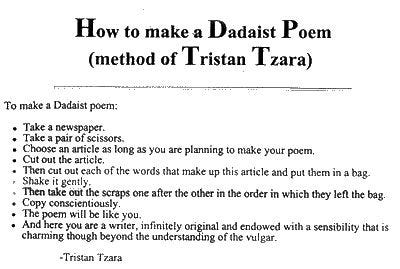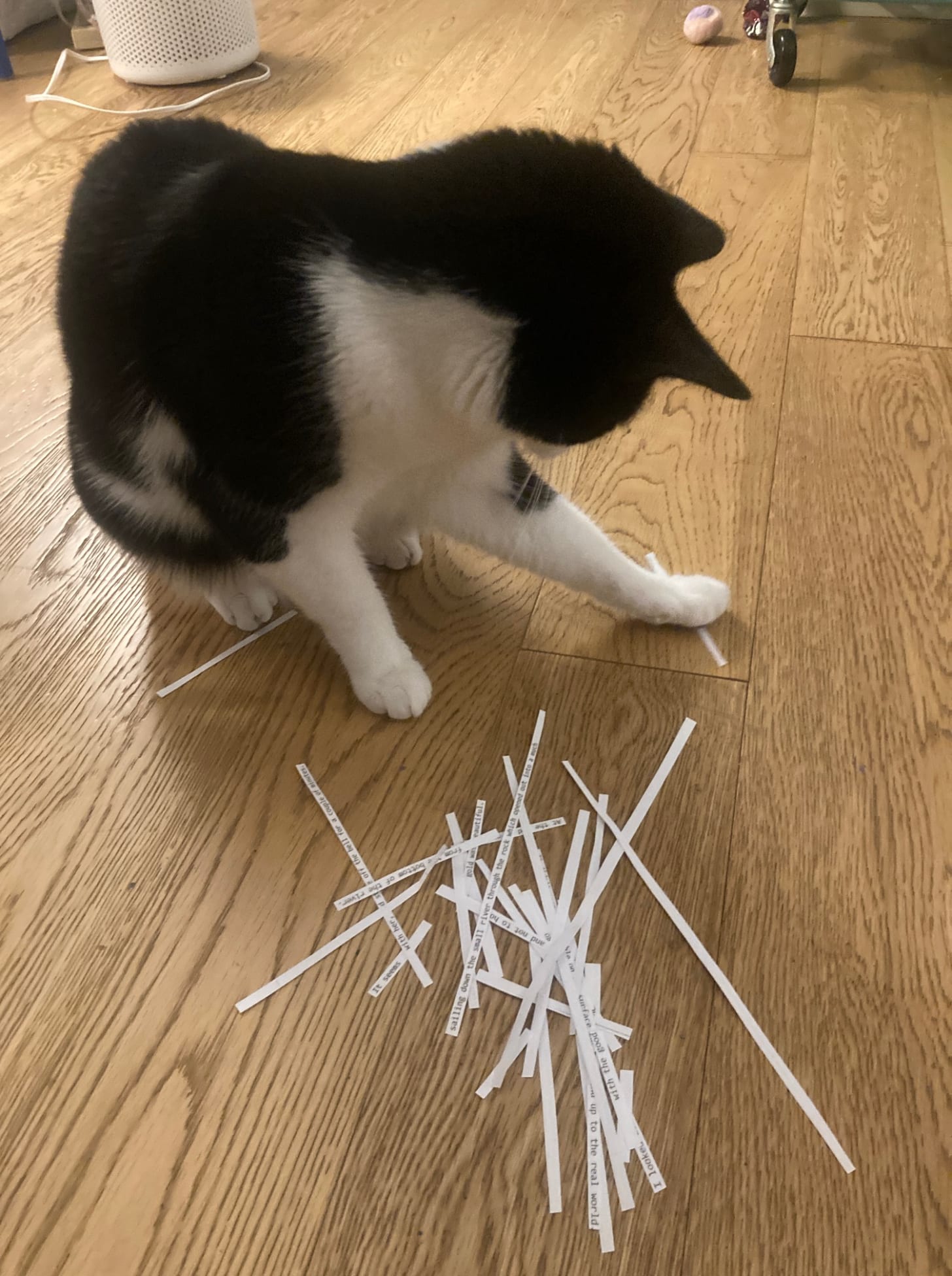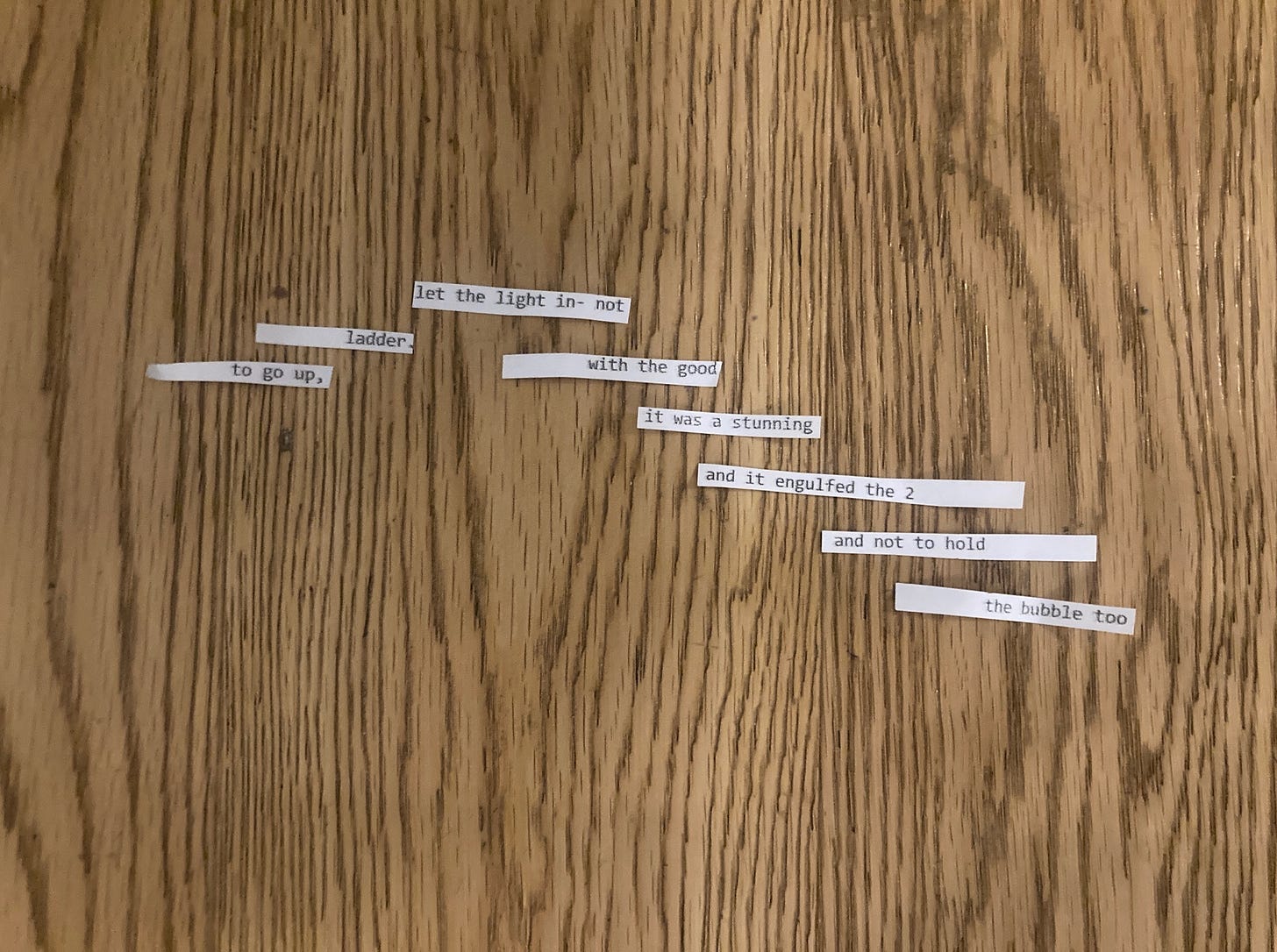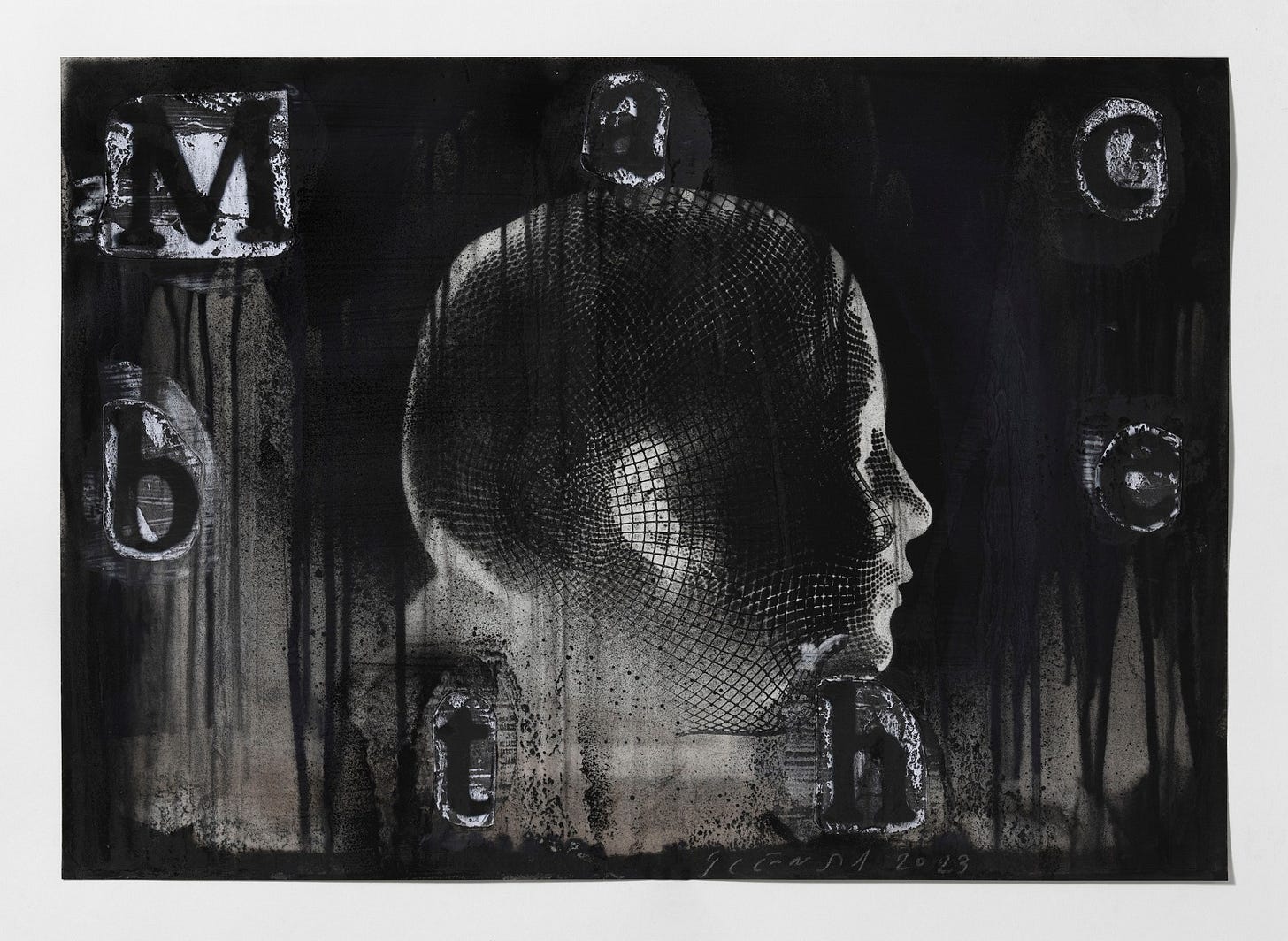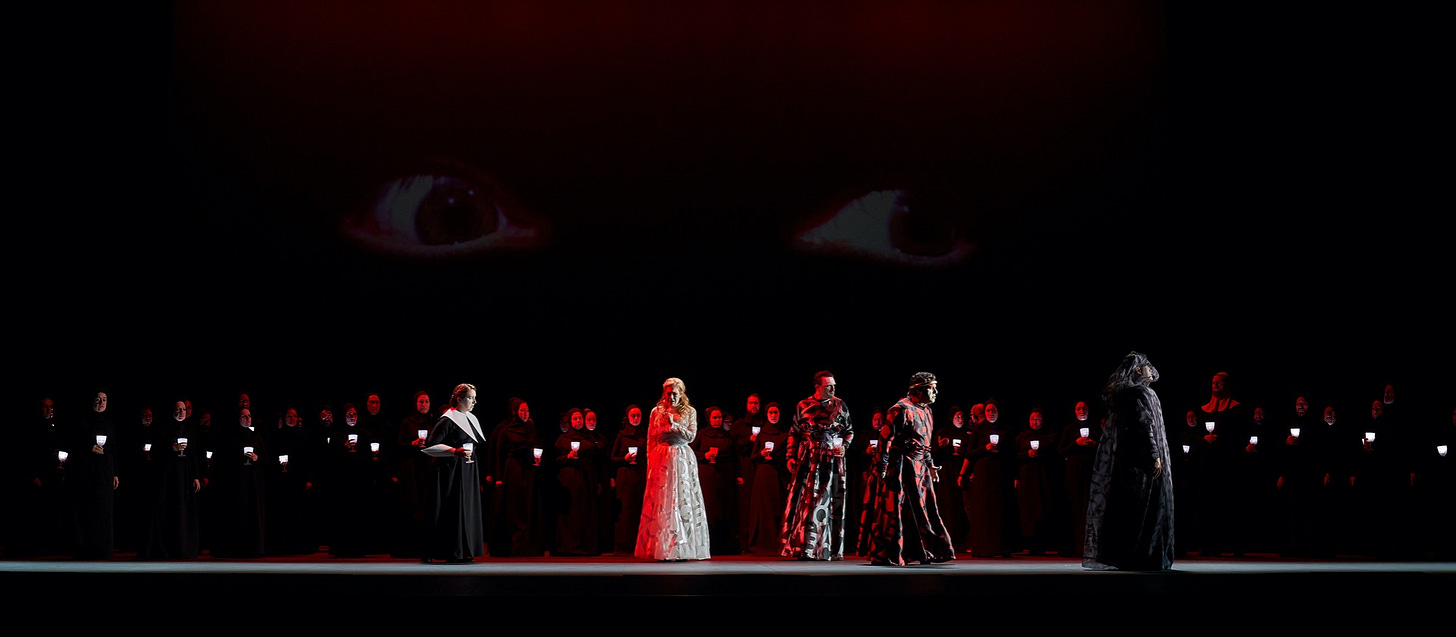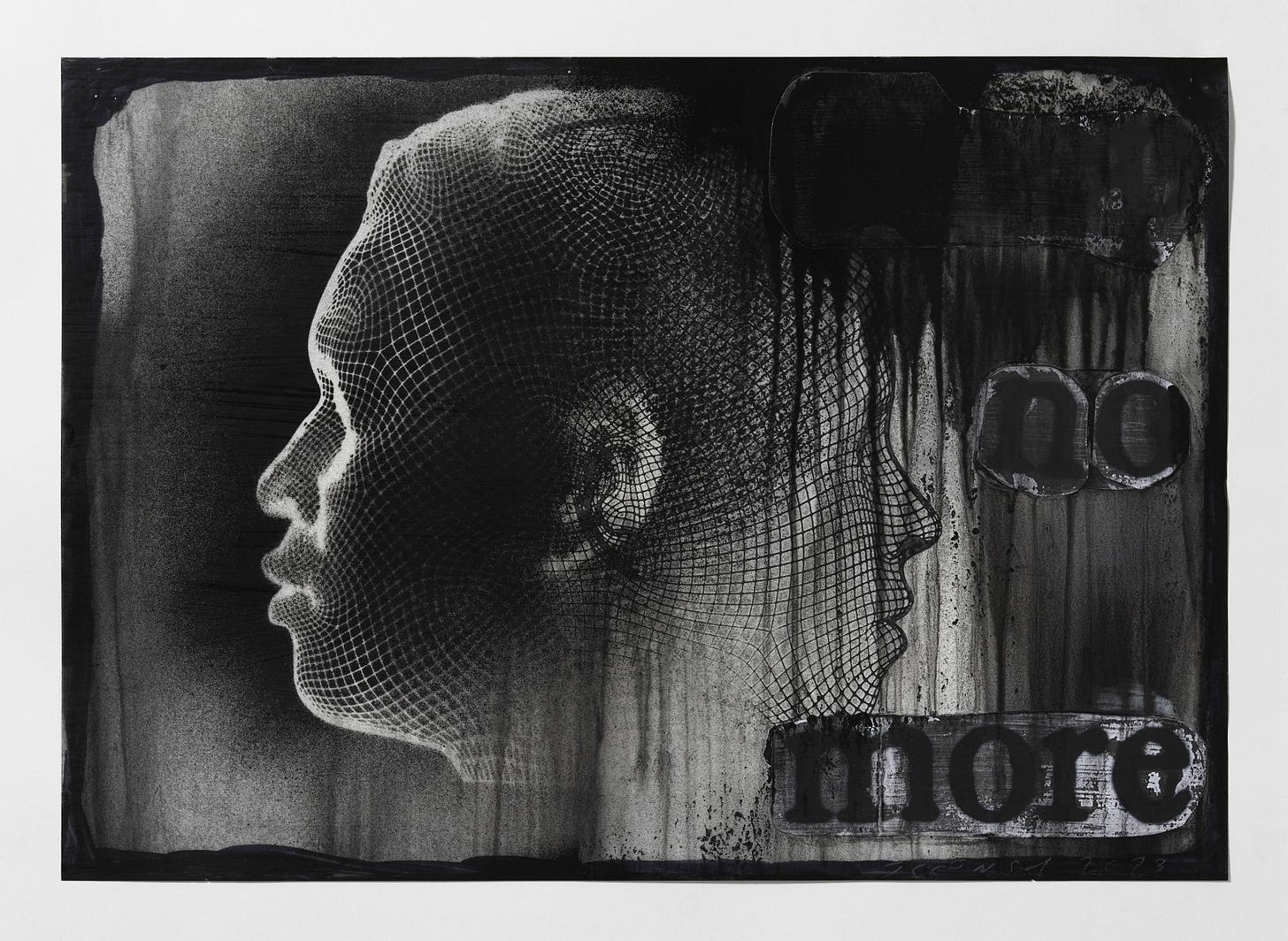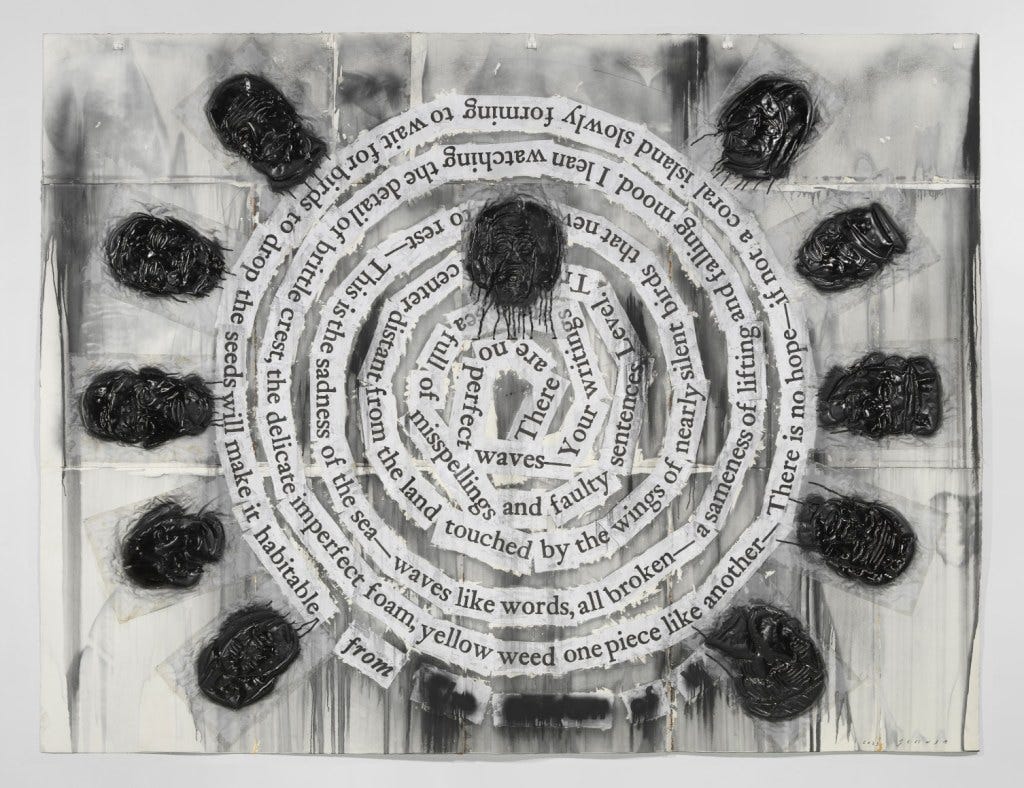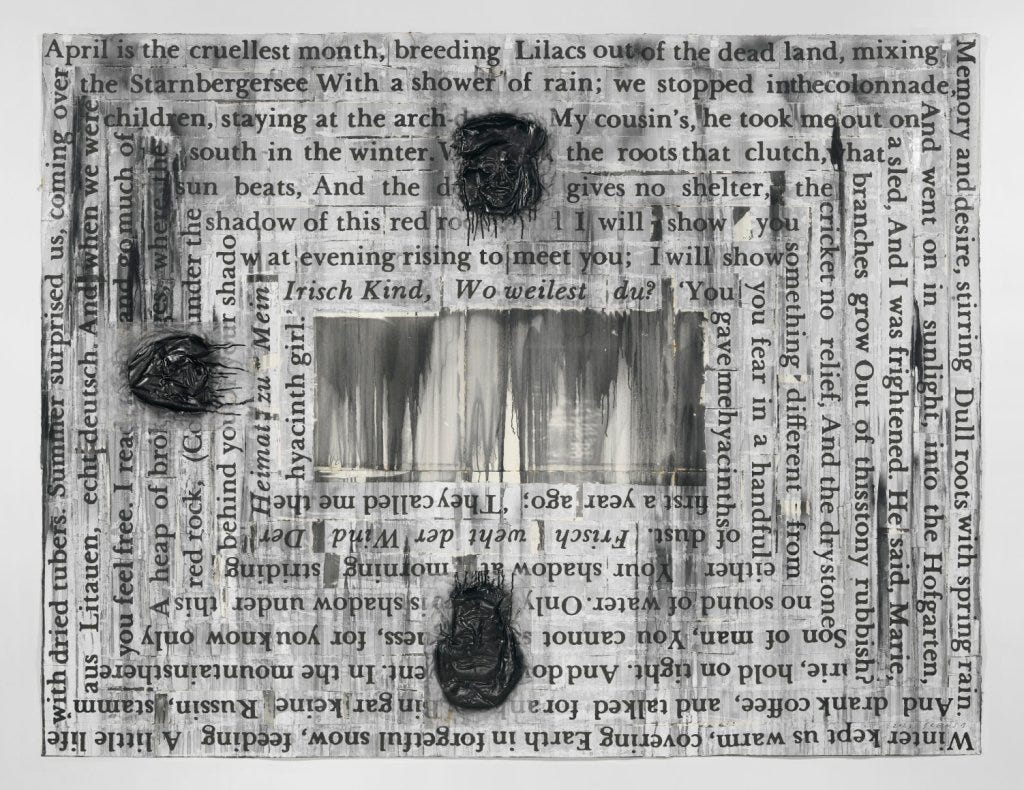Cut-up chaos: art as chaos magic
It’s been a while since I've written about text art, the original reason this blog exists, and so it's come full circle in a rather lovely way. This summer I saw Jaume Plensa's exhibition Silent Diary and was also introduced to chaos magic.
I heard about chaos magic, in a random bar conversation and of course was curious. I started with a podcast while on a plane, but kept falling asleep after hearing about the founder the umpteenth time and finally just googled for a simple snapshot into chaos magic. The technique that struck me the most and was the cut-up technique- which wasn't part of the chaos magic cannon until Brion Gysin and William Burroughs 'invented' it, from a technique used by the art group the Dadaists, notably Tristan Tzara. "In 1920 [he] published a short poem that advised the reader to cut out the words from a newspaper article and pull them at random from a bag - the result would make you "a writer of infinite originality and charming sensibility[.]" *
That artists would be drawn to Dada techniques to spontaneously create new ideas and inspirations makes complete sense.
Burrough used it as a way to write, cutting up large segments of text to reassemble, and also made a couple films using the technique, reassembling footage in new ways to create cut up narratives. He famously said, ‘[p]erhaps events are pre-written and pre-recorded and when you cut word lines the future leaks out"**
Burrough apparently also used these cut-ups as recording to cast spells on business' he didn't like. He would create cut-ups of radio stations, bad things about the business, unsavory things in general, and go to cafes and play these recordings at sub human volume and/or frequencies, that was supposed to hex the business. I mean, a low level of noise in anyone's subconscious while trying to relax, read, write, chat to others would probably be annoying enough to make people leave!
The cut up technique was taken on by David Bowie, in his lyrics. '“What I’ve used it for, more than anything else, is igniting anything that might be in my imagination,” he [said]. “It can often come up with very interesting attitudes to look into. I tried doing it with diaries and things, and I was finding out amazing things about me and what I’d done and where I was going.”'*** He also, took this technique one step further when he worked with Brian Eno, developing a computer program that would take random words and spin them into new orders to create lyrics, it "would eat the words and spit them back in some less referential form.” The computer itself was shown as part of the Bowie exhibition at the Brooklyn Museum of Art a couple of years back.
Bowie described how he uses that computer program in [a] 1997 BBC clip []: “I’ll take articles out of newspapers, poems that I’ve written, pieces of other people’s books, and put them all into this little warehouse, this container of information, and then hit the random button and it will randomize everything.”'*
They were so ahead of their time: AI before AI.
I decided I need to try it (cut-ups, not hexing my local cafe- but only because Here comes the Warm Jets started playing as I was writing this. ha).
I had used an unconsciously flowing writing style on paintings a long time ago. I didn't try make sense of the text, but simply chopped it up and created wave shapes with it, and painted over it to add to the texture of a seascape, however, the words are now imbedded, and not really discernable as a text, but more as a memory of what was going on in my life in that period, a record of my nostalgic nightly musings baked into the reality hangover of the my ocean view in the day.
The text I chose this time was one written as a recording of an active imagination meditation I did. This is in essence a waking dream, in a technique created by Jung. If you're curious about this check out the podcast The Creative Codex or Insight Timer for the Active Imagination Technique. Lulled into a meditative state, you allow your mind to take a trip into your unconscious. I thought it would be surreal enough to use as text. It was. Especially when the cat had a go.
Playing with text this way reminded me of an exhibition I had seen earlier in the summer, by Jaume Plensa, called Silent Diary and shown at the Galerie Le Long in NYC, the exhibition was of a series of paintings on paper. Some were prelim works for creating set and costume design for a Macbeth at Gran Teatre del Liceu, Barcelona. In these the words are obscured and painted over, "shadows obscure Shakespeare’s words to varying degrees, rendering some nearly illegible. Here, Plensa’s exploration of what the viewer sees—or does not see—recalls the role of Birnam Wood in Macbeth and the illusion of the advancing forest." ****
In the production, text is printed over the costumes, as if chaos and mad rants are seeping into very clothes they are wearing.
Some of the exhibition was cut-ups or centas. "The Latin term cento derives from Greek κέντρων (kentrōn), meaning "'to plant slips' (of trees)". A later word in Greek, κεντρόνη (kentronē), means "patchwork garment". According to Hugh Gerard Evelyn-White, "A cento is therefore a poem composed of odd fragments".*****These 'old fragments' were " clippings of poems by masters of the genre—among them T.S. Eliot and Charles Baudelaire." These drew me in the most, visually a journey of the mind of the chaos within.
All images of Jaume Plensas' work courtesy of Galerie Lelong and Gran Theatre du Liceu
Quotes from:
* https://www.bbc.com/news/magazine-33254672
**The Job: Interviews with William S. Burroughs (1974)
***https://www.openculture.com/2019/05/how-david-bowie-used-william-s-burroughs-cut-up-method-to-write-his-unforgettable-lyrics.html
****https://jaumeplensa.com/exhibitions-and-projects/exhibitions/silent-diary-glny
***** Ausonius, Decimus Magnus (1919). "Book XVII: A Nuptial Cento". In Hugh Gerard Evelyn-White (ed.). Ausonius: Books I-XVII. Loeb Classical Library. W. Heinemann. pp. 371–97. ISBN 9780674991279. Retrieved 13 February 2015. from Wikipedia https://en.wikipedia.org/wiki/Cento_(poetry)
For more info on cut-ups check out:




